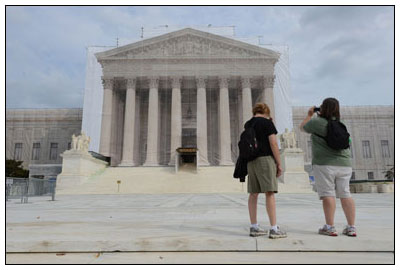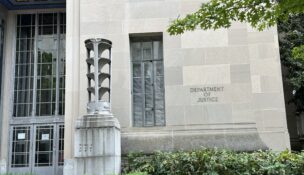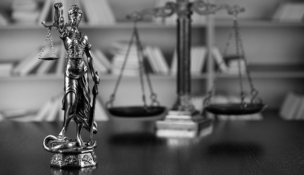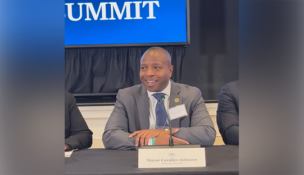Does ‘Daubert’ apply to class-action certification? US high court to decide
By: KIMBERLY ATKINS, BridgeTower Media Newswires//November 8, 2012//
Does ‘Daubert’ apply to class-action certification? US high court to decide
By: KIMBERLY ATKINS, BridgeTower Media Newswires//November 8, 2012//
If the justices of the U.S. Supreme Court wanted to decide whether the Daubert standard for admitting expert testimony at trial also applies at the class action certification stage, they picked a factually and procedurally messy case as a vehicle for doing so.
During oral arguments on Monday in Comcast v. Behrend, a complicated antitrust case that was all but settled just weeks before the Supreme Court revived it with a certiorari grant, the justices tried to hash out whether the heightened expert testimony admission standard imposed by the 1993 case Daubert v. Merrell Dow Pharmaceuticals, Inc. (509 U.S. 579) applies to plaintiffs seeking to certify a class.
In Daubert, the Court held that expert testimony can be admitted at trial only if it pertains to technical, scientific or other specialized knowledge that has a valid scientific connection to the case and will assist the trier of fact.
Lower courts have split on the issue of whether a full-fledged Daubert analysis is required at the class certification stage, and some have held that a modified version of the standard – sometimes called “Daubert-light” – applies instead.
Last year, in its decision in Wal-Mart v. Dukes, the Court left that question open, but hinted strongly that plaintiffs should expect their experts to be held to some scrutiny at the certification stage.
With the grant in Behrend, a class action brought by Philadelphia-area cable customers alleging that the cable provider engaged in a “clustering” scheme that stifled competition, raised prices and flouted antitrust laws, the Court’s answer to the Daubert question seemed imminent.
The Court is reviewing a 3rd Circuit ruling which said that plaintiffs seeking certification need not meet a Daubert standard; a showing that their damages are capable of measurement was enough. The justices even expressly defined the issue for the parties: whether class members must introduce admissible evidence, including expert testimony, to show that the case is susceptible to awarding damages on a class-wide basis.
But during oral arguments, the justices at times seemed perplexed by every aspect of the case – including the pronunciation of the precedent.
 “Is it DOW-bert or DAH-bert?” Justice Antonin G. Scalia asked at one point.
“Is it DOW-bert or DAH-bert?” Justice Antonin G. Scalia asked at one point.
Pointing to ‘abstract methodology’
Miguel Estrada, a partner in the Washington office of Gibson, Dunn & Crutcher, argued that the 3rd Circuit’s reading of the case would allow purported class members to simply “point to some abstract methodology” in order to get past the certification stage.
Justice Elena Kagan expressed some frustration that the thorny particulars of the case may get in the way of the Court addressing the question it wanted to answer.
“We reformulated the question presented in this case [to answer] whether a district court at a class certification stage has to conduct a Daubert inquiry [because] we wanted to decide a legal question, rather than a question about who was right as to this particular” case, Kagan said.
But among the problems the current case presents is uncertainty as to whether the issue was properly preserved by the parties in the lower courts, or even if the settlement reached in the case weeks before the justices took up the case renders the cert improvidently granted.
“So what do we do?” Kagan asked.
Estrada noted that in cases like these, the legal determination is driven by the facts and procedural history of the case.
“The focus of the class certification hearing is to decide whether the case should be tried as a class, and therefore the first question that the district court has to ask is … do they have a methodology that sufficiently fits the facts and is reliably based on a scientific method so that these people will be capable of proving class-wide this issue at trial?” he said.
‘Plausible model’ test?
When Barry C. Barnett, a partner in the Dallas office of Susman Godfrey, began his argument on the consumers’ behalf by focusing on the record, Justice Anthony M. Kennedy steered him back to the bigger issue of whether a Daubert analysis was necessary at the certification stage since no jury is present.
“If the judge admits the evidence and if it turns out that that doesn’t meet the standard of reliability, then he can exclude it,” Kennedy noted.
Barnett said that the cable company should not get the benefit of a ruling on an issue it didn’t argue at the lower court.
“It is disrespectful to a district judge not to object on Daubert grounds and then complain that what he did was completely unusable in the court,” Barnett said.
Justice Stephen G. Breyer asked Barnett whether he was arguing that plaintiffs merely have to present some evidentiary model at the certifications stage and show that it “isn’t worthless.”
“We do have to show that this is a fantastic model, which it is,” Barnett said.
“You don’t have to show that much,” Breyer said. “I think you only have to show it’s a plausible model.
“All right. I agree,” Barnett said. “I’m happy with whatever test y’all want to apply, is what I’m saying.”
A decision is expected later this term.
Legal News
- Some State Bar diversity participants walk away from program
- Wisconsin court issues arrest warrant ‘in error’ for Minocqua Brewing owner
- Iranian nationals charged cyber campaign targeting U.S. Companies
- Facing mostly white juries, are Milwaukee County defendants of color truly judged by their peers?
- Milwaukee Mayor speaks in D.C. Tuesday at White House water summit
- Chicago man sentenced to prison after being caught with ‘Trump Gun’
- FTC bans non-competes
- Gov. Evers seeks applicants for Dane County Circuit Court
- Milwaukee man charged in dismemberment death pleads not guilty
- Democratic-led states lead ban on the book ban
- UW Madison Professor: America’s child care crisis is holding back moms without college degrees
- History made in Trump New York trial opening statements
WLJ People
- Power 30 Personal Injury Attorneys – Russell Nicolet
- Power 30 Personal Injury Attorneys – Benjamin Nicolet
- Power 30 Personal Injury Attorneys – Dustin T. Woehl
- Power 30 Personal Injury Attorneys – Katherine Metzger
- Power 30 Personal Injury Attorneys – Joseph Ryan
- Power 30 Personal Injury Attorneys – James M. Ryan
- Power 30 Personal Injury Attorneys – Dana Wachs
- Power 30 Personal Injury Attorneys – Mark L. Thomsen
- Power 30 Personal Injury Attorneys – Matthew Lein
- Power 30 Personal Injury Attorneys – Jeffrey A. Pitman
- Power 30 Personal Injury Attorneys – William Pemberton
- Power 30 Personal Injury Attorneys – Howard S. Sicula











